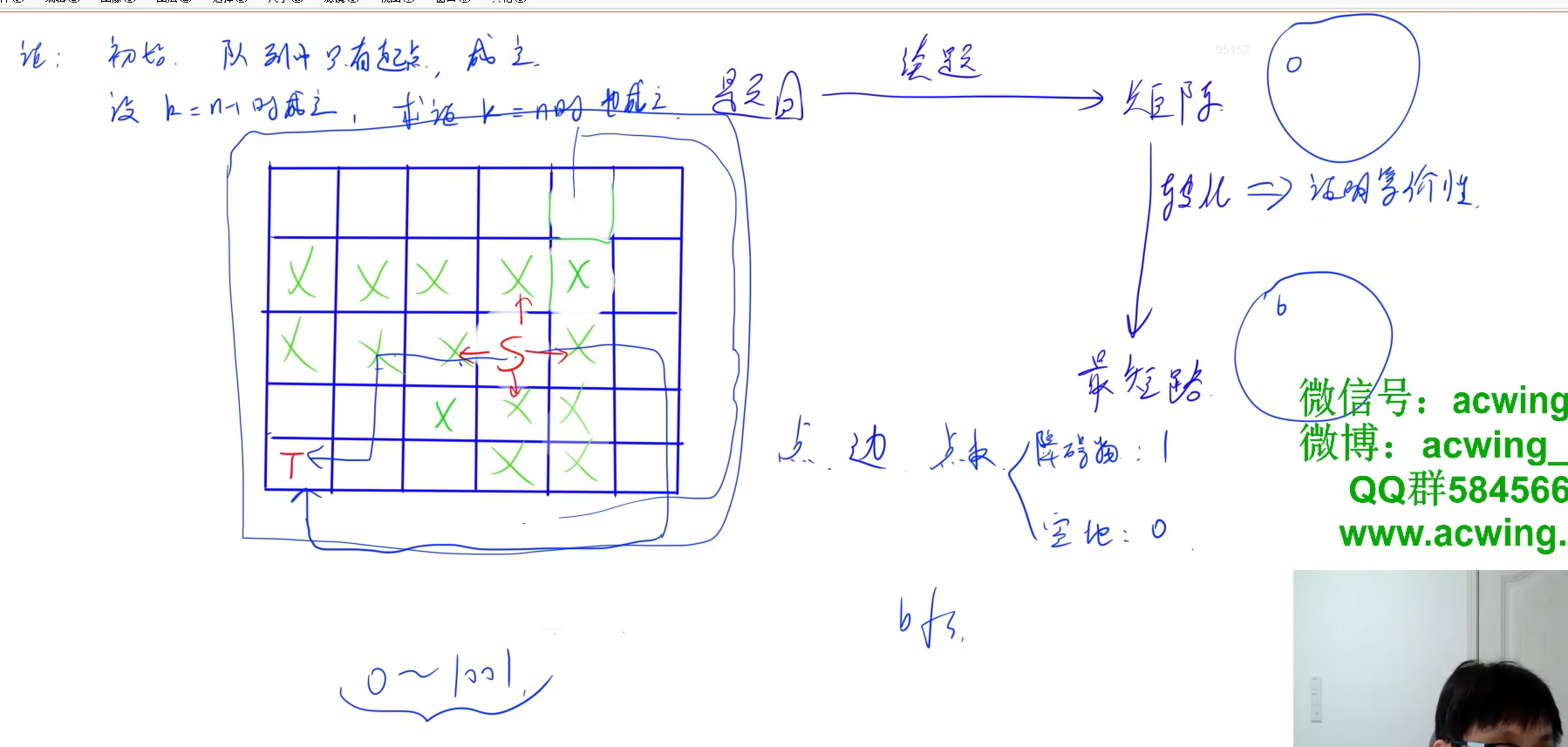干了一整天的活,农夫约翰完全忘记了他把拖拉机落在田地中央了。
他的奶牛非常调皮,决定对约翰来场恶作剧。
她们在田地的不同地方放了 NN 捆干草,这样一来,约翰想要开走拖拉机就必须先移除一些干草捆。
拖拉机的位置以及 NN 捆干草的位置都是二维平面上的整数坐标点。
拖拉机的初始位置上没有干草捆。
当约翰驾驶拖拉机时,他只能沿平行于坐标轴的方向(北,南,东和西)移动拖拉机,并且拖拉机必须每次移动整数距离。
例如,驾驶拖拉机先向北移动 22 单位长度,然后向东移动 33 单位长度。
拖拉机无法移动到干草捆占据的位置。
请帮助约翰确定他需要移除的干草捆的最小数量,以便他能够将拖拉机开到二维平面的原点。
输入格式
第一行包含三个整数:NN 以及拖拉机的初始位置 (x,y)(x,y)。
接下来 NN 行,每行包含一个干草捆的位置坐标 (x,y)(x,y)。
输出格式
数据范围
1≤N≤500001≤N≤50000,
1≤x,y≤10001≤x,y≤1000
输入样例:
7 6 3 6 2 5 2 4 3 2 1 7 3 5 4 6 4
输出样例:
1

//能走出界#include <iostream>#include <cstring>#include <algorithm>#include <queue>#define x first#define y secondusing namespace std;typedef pair<int,int> PII;const int N = 1010;int dist[N][N];bool st[N][N],g[N][N]; //st判重,g记录干草int dx[4] = {-1,0,1,0}, dy[4] = {0,1,0,-1};int bfs(int sx, int sy) {deque<PII> q;q.push_front({sx,sy});memset(dist,0x3f,sizeof dist);dist[sx][sy] = 0;while (q.size()) {auto t = q.front();q.pop_front();//判重if (st[t.x][t.y]) continue;st[t.x][t.y] = true;//剪枝if (!t.x && !t.y) break;for (int i = 0; i < 4; ++i) {int a = t.x + dx[i], b = t.y + dy[i];if (a >= 0 && a < N && b >= 0 && b < N) {int w = 0;if (g[a][b]) w = 1;if (dist[a][b] > dist[t.x][t.y] + w) {dist[a][b] = dist[t.x][t.y] + w;//加入队列if (!w) q.push_front({a,b});else q.push_back({a,b});}}}}return dist[0][0];}int main() {int n,sx,sy;scanf("%d%d%d",&n,&sx,&sy);while (n -- ) {int x,y;scanf("%d%d",&x,&y);g[x][y] = true;}cout << bfs(sx,sy) << endl;return 0;}

